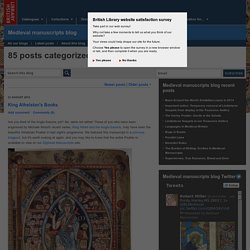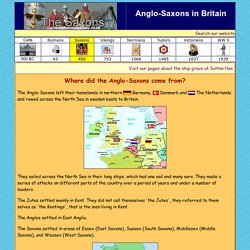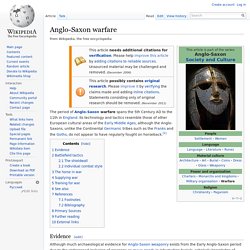

Anglo saxon. Anglo-Saxon Female Names. Medieval manuscripts blog: Anglo-Saxon. As many of you hopefully already know, the British Library offers two different ways to work with digital versions of our medieval manuscripts.

Our Digitised Manuscripts website contains complete coverage of many of the items in our collections, while the Catalogue of Illuminated Manuscripts is another very useful source of digital catalogue records and images. Miniature of the Crucifixion, from a leaf from a missal, northern France or Netherlands, 2nd half of the 13th century, Additional MS 34652, f. 5 The Catalogue of Illuminated Manuscripts is based on a Microsoft Access database, so it has allowed us to develop some very detailed search tools. CIM (as we call it) is particularly useful for iconographical searches, since each image is described individually. You can search for various terms either in these specific image descriptions, or within the wider manuscript records. Or, if you are just interested in exploring, why not take a tour of some collection highlights? The Anglo Saxon Survival Guide. When the Anglo-Saxons Came to Britain what clothing did the wear?

Objects found in graves as well as illustrations in Anglo-Saxon scrolls and books, stone engravings and images on objects can all give us a clue. Male clothing included shirts made of wool or linen and some form of loin-cloths. On their legs they wore woolen trousers or sometimes leggings. Over this was worn a tunic to mid thigh or even reaching to the knees. It could be plain or have decorations around neckline and wrists. A belt worn at the waist provided a practical location to hang a pouch, knife or seax and other accessories. Women would wear a tubular dress fastened at the shoulders. Women like men would usually have a belt, carry a small knife and pouch but also the senior female would carry keys to lock the store of food. Anglo-Saxon children wore clothes similar to the adults. Women and girls wore a lot of jewelry .
Warfair. Primary History - Anglo-Saxons. Primary History - Anglo-Saxons - Who were they? Where did the Anglo-Saxons come from? The Anglo-Saxons left their homelands in northern Germany, Denmark and The Netherlands and rowed across the North Sea in wooden boats to Britain.

They sailed across the North Sea in their long ships, which had one sail and many oars. They made a series of attacks on different parts of the country over a period of years and under a number of leaders. The Jutes settled mainly in Kent. The Angles settled in East Anglia. The Saxons settled in areas of Essex (East Saxons), Sussex (South Saxons), Middlesex (Middle Saxons), and Wessex (West Saxons).
British Kingdoms (each area ruled by a different king) Did Anglo-Saxon ships have sails? An intriguing one, this.

As a writer, you want to get it right, but how do you do that when the authorities disagree? My novel The Half-Slave revolves around the threat of a Saxon sea-borne invasion and it was vital that I came to a coherent view as to whether a fleet of Saxons in the late 4th century would have travelled under their own grunt-power or with the aid of sails and a following wind. Some historians argue that the Saxons of this period did not have sails, but travelled on raids in long rowing boats such as the one pictured. The keels of the Saxon ships were not strong enough to support a sail, they say, and without a deep keel and mast-step such as the Vikings subsequently developed, ships had to be driven by oars. The remains of Saxon boats that have been discovered, particularly the Nydam ship and the Sutton Hoo ship, show no evidence of sails, although neither ship may have been typical of ocean-going vessels of the time.
Sutton Hoo Not sure I buy this. Anglo-Saxon warfare. The period of Anglo-Saxon warfare spans the 5th Century AD to the 11th in England.

Its technology and tactics resemble those of other European cultural areas of the Early Middle Ages, although the Anglo-Saxons, unlike the Continental Germanic tribes such as the Franks and the Goths, do not appear to have regularly fought on horseback.[1] Evidence[edit] Although much archaeological evidence for Anglo-Saxon weaponry exists from the Early Anglo-Saxon period due to the widespread inclusion of weapons as grave goods in inhumation burials, scholarly knowledge of warfare itself relies far more on the literary evidence, which was only being produced in the Christian context of the Late Anglo-Saxon period. These literary sources are almost all authored by Christian clergy, and thus do not deal specifically with warfare; for instance, Bede's Ecclesiastical History of the English People mentions various battles that had taken place but does not dwell on them.
Battlefield tactics[edit] See also[edit]